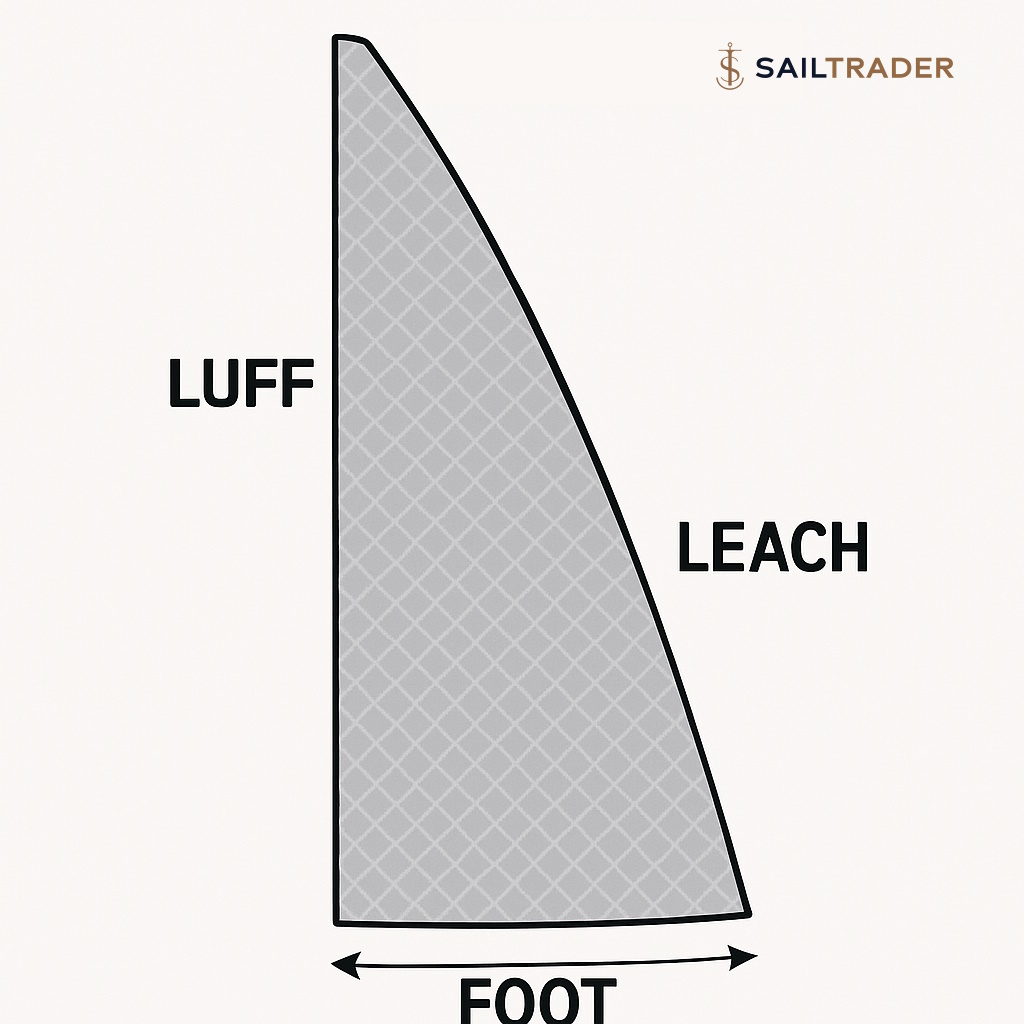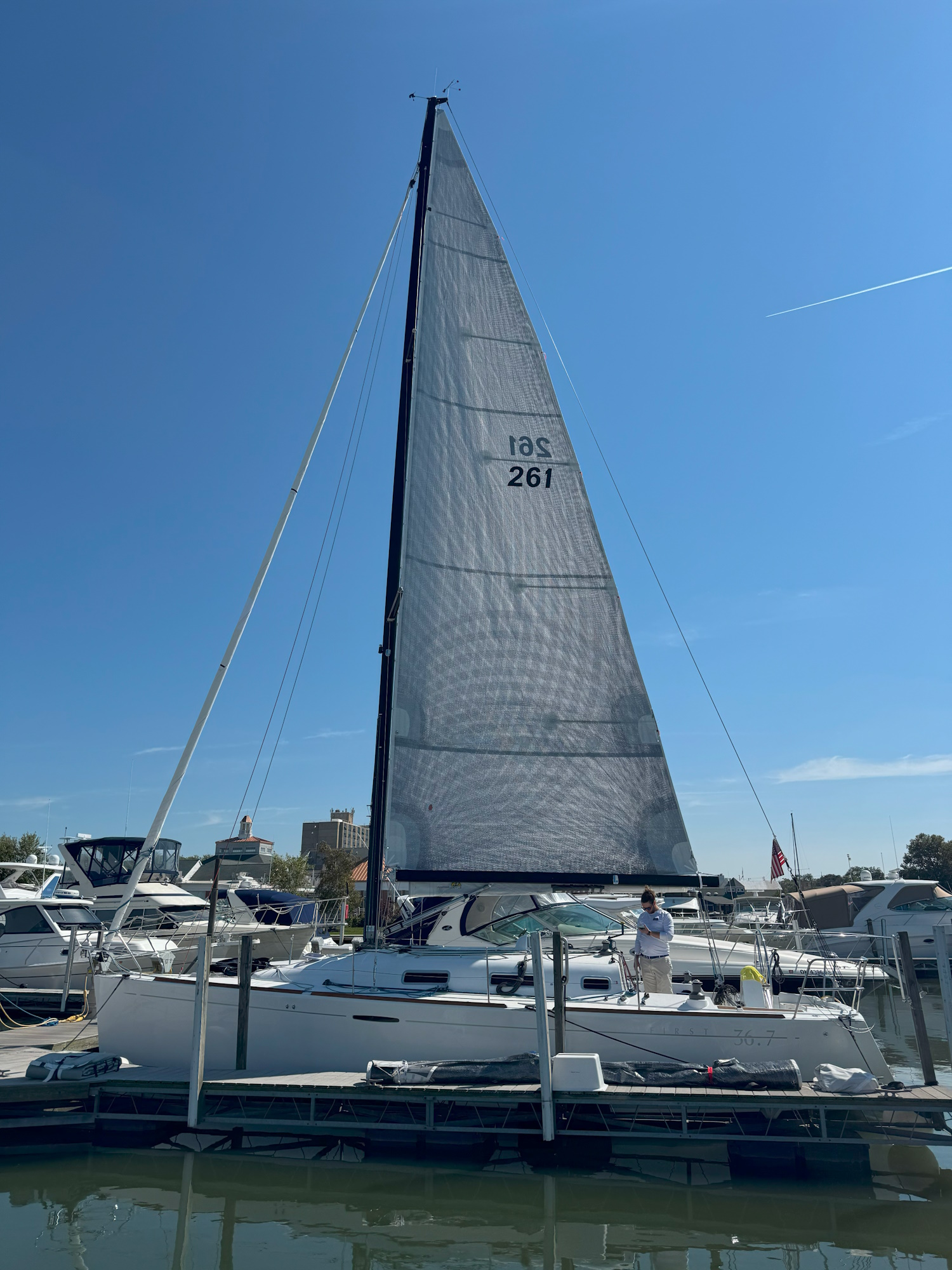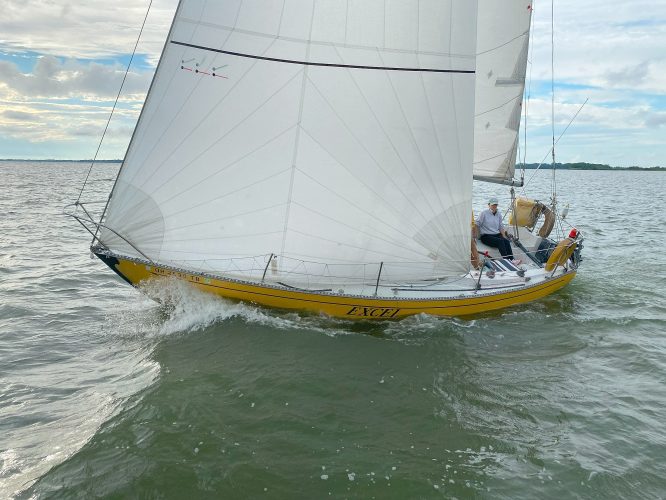Buying a used sail is one of the best ways to save money while still upgrading your sailboat’s performance. But before you start browsing listings for used mainsails, headsails, or spinnakers, you’ll need to know the right measurements. Used sails don’t come custom-fitted, so getting accurate dimensions is the key to finding one that works for your rig. Here’s a step-by-step guide on how to measure your boat for a used sail—and how SailTrader makes the process easier.
Why Accurate Measurements Matter
Unlike new sails, which are cut specifically for your sailboat, used sails come in pre-determined dimensions. Even small differences in length or width can affect performance, handling, and safety. Measuring properly ensures you don’t end up with a sail that’s too loose, too tight, or simply unusable.
This is where SailTrader helps simplify your search. Once you know your boat’s key numbers, you can filter sails on the marketplace by luff length, leech length, and foot length, making it easy to match your measurements to available listings.
Tools You’ll Need
Before starting, grab the following:
- A 50–100 ft. tape measure (long enough for mast height or forestay length)
- A notepad or phone to record measurements
- A helper if possible—many of these measurements are easier with two people
- Safety gear if climbing the mast is required (often avoided by measuring with halyards instead)
SailTrader Recommended Product:


Crescent Lufkin 1/2″ x 100′ Hi-Viz® Orange Linear Fiberglass Tape Measure
Measuring for a Mainsail
The two most important dimensions for a mainsail are the luff and the foot.
- Luff (Front Edge): Attach a tape measure to the main halyard and hoist it to the top of the mast. Pull it down to the boom and record the length. This is your maximum luff.
- Foot (Bottom Edge): Measure along the boom from the aft side of the mast to the outhaul shackle at the end of the boom.
- Leech (Back Edge): Measure from the masthead to the end of the boom with the halyard. While not always required, it helps in confirming sail shape.
 Be sure to also note your boat’s mast track type (slugs, bolt rope, cars) and the distance between slides if relevant.
Be sure to also note your boat’s mast track type (slugs, bolt rope, cars) and the distance between slides if relevant.
On SailTrader, you can browse used mainsails and quickly narrow your options by entering your luff and foot measurements into the filters—no more wasting time on sails that won’t fit.
Measuring for a Headsail (Genoa or Jib)
Headsail measurements focus on the luff, leech, and foot.
- Luff: Attach your tape to the jib halyard, hoist to the masthead, and measure down to the deck near the headstay tack point.
- Leech: With the halyard still at full height, run the tape diagonally to the clew position where sheets normally attach.
- Foot: Measure between the tack (base of forestay) and the clew position.
If your boat has a furling system, measure from the top swivel to the drum instead of masthead to deck.
When you’ve got these numbers, SailTrader makes it easy to search used headsails by inputting your luff and foot dimensions, helping you find sails that fit your boat’s rig the first time.
Measuring for a Spinnaker
Spinnakers are less exact but still require key dimensions:
- Luff Lengths: Measure the spinnaker halyard hoisted to full height down to the deck on both sides of the forestay.
- Girth (Width): Estimate from clew to clew across the bow, typically equal to or wider than the foot of a headsail.
Keep in mind that spinnakers are more forgiving in size, but too large can overpower the boat.
On SailTrader, you can compare used spinnakers and check the seller’s posted measurements against your own before making a purchase.
 Recording Additional Details
Recording Additional Details
Besides dimensions, make sure you note:
- Mast type (fractional or masthead rig)
- Rigging setup (roller furling, spinnaker pole length, bowsprit if applicable)
- Preferred sail type (used mainsail, used headsail, used spinnaker, or specialty sails like code sails)
These details help sellers or sail lofts confirm whether a used sail will suit your boat.
How SailTrader Helps You Find the Right Fit
After you’ve taken your measurements, the next step is shopping for sails that match. SailTrader makes this simple with search filters for luff length, foot length, and sail type. Instead of scrolling through endless listings, you can zero in on sails that meet your boat’s specifications—saving time and avoiding costly mistakes.
Whether you’re looking for a used mainsail, used headsail, used spinnaker, or code sail, SailTrader connects you with sellers across the sailing community, making it one of the easiest ways to buy or sell used sails online.
Final Tips Before Buying a Used Sail
- Double-check all measurements. A few extra minutes can save you hundreds of dollars.
- Compare your numbers to the sail’s advertised dimensions—especially the luff length.
- If in doubt, consult your boat’s sail plan or manufacturer specs for backup.
By carefully measuring your boat and using SailTrader’s measurement-based search filters, you’ll increase your chances of finding a used sail that fits well, performs efficiently, and extends your time on the water without breaking the bank.

